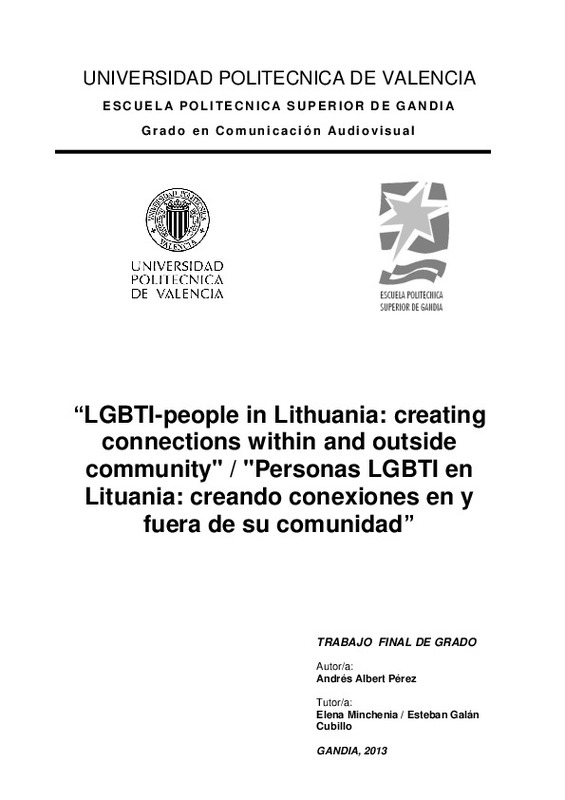JavaScript is disabled for your browser. Some features of this site may not work without it.
Buscar en RiuNet
Listar
Mi cuenta
Estadísticas
Ayuda RiuNet
Admin. UPV
LGBTI-people in Lithuania: creating connections within and outside community
Mostrar el registro completo del ítem
Albert Pérez, A. (2013). LGBTI-people in Lithuania: creating connections within and outside community. Universitat Politècnica de València. http://hdl.handle.net/10251/36057
Por favor, use este identificador para citar o enlazar este ítem: http://hdl.handle.net/10251/36057
Ficheros en el ítem
Metadatos del ítem
| Título: | LGBTI-people in Lithuania: creating connections within and outside community | |||
| Autor: | Albert Pérez, Andrés | |||
| Director(es): | ||||
| Entidad UPV: |
|
|||
| Fecha acto/lectura: |
|
|||
| Resumen: |
Esta tesis es el resultado de la combinación en estudios de comunicación, género y relacionada con los derechos humanos. Muestra las conexiones que las personas LGBTI en Lituania han establecido dentro y fuera de su ...[+]
This thesis is built on the crossing of media studies, gender studies and related to ideas of the human rights. It is about the connections the LGBTI people in Lithuania have established within and outside community, online ...[+]
|
|||
| Palabras clave: |
|
|||
| Derechos de uso: | Reconocimiento - No comercial - Sin obra derivada (by-nc-nd) | |||
| Editorial: |
|
|||
| Titulación: |
|
|||
| Tipo: |
|
recommendations
Este ítem aparece en la(s) siguiente(s) colección(ones)
-
EPSG - Trabajos académicos [5004]
Escuela Politécnica Superior de Gandia





![[File]](/themes/UPV/images/mime.png)


